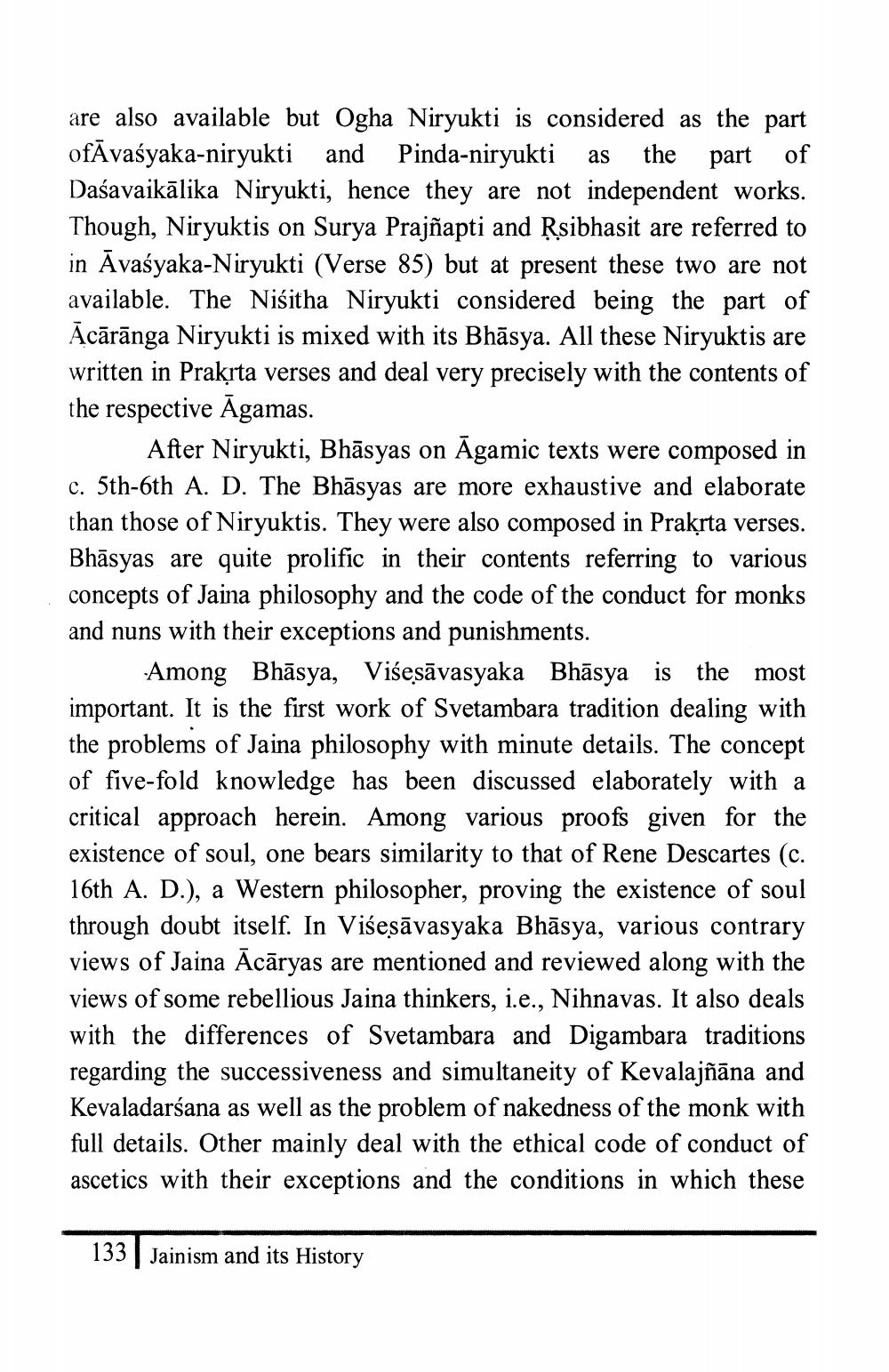________________
are also available but Ogha Niryukti is considered as the part ofĀvaśyaka-niryukti and Pinda-niryukti as the part of Daśavaikālika Niryukti, hence they are not independent works. Though, Niryuktis on Surya Prajñapti and Rsibhasit are referred to in Avaśyaka-Niryukti (Verse 85) but at present these two are not available. The Niśitha Niryukti considered being the part of Acārānga Niryukti is mixed with its Bhāsya. All these Niryuktis are written in Prakıta verses and deal very precisely with the contents of the respective Agamas.
After Niryukti, Bhāsyas on Āgamic texts were composed in c. 5th-6th A. D. The Bhāsyas are more exhaustive and elaborate than those of Niryuktis. They were also composed in Prakrta verses. Bhāsyas are quite prolific in their contents referring to various concepts of Jaina philosophy and the code of the conduct for monks and nuns with their exceptions and punishments.
Among Bhāsya, Višesāvasyaka Bhāsya is the most important. It is the first work of Svetambara tradition dealing with the problems of Jaina philosophy with minute details. The concept of five-fold knowledge has been discussed elaborately with a critical approach herein. Among various proofs given for the existence of soul, one bears similarity to that of Rene Descartes (c. 16th A. D.), a Western philosopher, proving the existence of soul through doubt itself. In Višesāvasyaka Bhāsya, various contrary views of Jaina Ācāryas are mentioned and reviewed along with the views of some rebellious Jaina thinkers, i.e., Nihnavas. It also deals with the differences of Svetambara and Digambara traditions regarding the successiveness and simultaneity of Kevalajñāna and Kevaladarśana as well as the problem of nakedness of the monk with full details. Other mainly deal with the ethical code of conduct of ascetics with their exceptions and the conditions in which these
133
Jainism and its History




